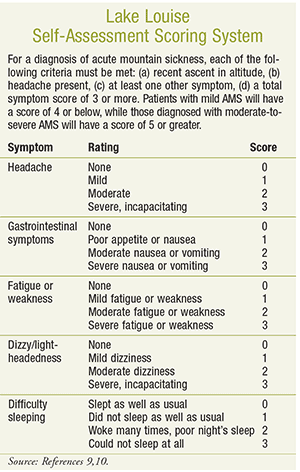

This is critically important for avoiding problems. The article also talks a lot about acclimatisation, giving your body enough time to adapt to higher altitude. Conversely, descending towards sea level is the single most important factor in reducing or eliminating all forms of altitude sickness. Ascending further away from sea level is the risky activity and the time you must be alert. Hence this article talks a lot about ascent and descent. The altitude where you sleep is also important because most of the extra red cells needed to improve your oxygen management are manufactured while you sleep. These are the two major factors that cause altitude sickness. The difficulty your body has maintaining a good oxygen supply and keeping related problems under control is directly related to how high up you are, and also to recent changes in your altitude. The changes to your body at altitude are complex and can be quite dramatic. At lower air pressure, water evaporates faster.However, the process takes several days, sometimes more than a week, and in the meanwhile you may be ill.

Your body adjusts to this by making more red blood cells to carry oxygen more efficiently. Air at lower pressure has less oxygen per lungful.The body has two main problems with high altitude and the corresponding lower air pressure: The further you move from sea level up into higher altitudes, the lower the air pressure is.
Symptoms of altitude sickness how to#
Only book with tour operators that have a detailed plan for how to deal with people suffering from acute mountain sickness (AMS). If you're not an experienced mountaineer, don't book tours with operators that are not knowledgeable and frank about risks involved, regardless of whether they are well-meaning but ignorant people just trying to make a living, or unscrupulous people in for quick profit. Finally, the terrain may pose dangers such as avalanches or just falling off a mountain see Mountaineering.Ī problem, especially for inexperienced people, are ignorant or malicious tour operators offering hikes to high elevations. Another is that there may be danger from strong sun because there is less atmosphere above to protect you see Sunburn and sun protection. One is that it may get very cold see Cold weather. There are other risks at altitude that are covered in other articles. Acclimation requires time, and rushing causes altitude sickness. Particularly dangerous are tall, easy mountains, notably Kilimanjaro (5895 m) and Aconcagua (6961 m), where it's easy to get dangerously high quickly. For higher altitudes much more care, preparation, and gradual ascent is necessary, and potent treatments are available. Acetazolamide (ACZ) is the most commonly used drug for prevention, and is particularly useful for flying into a high-altitude city. For moderate altitudes (such as 3500 m), the main solution is to acclimatize for a night or two at a lower altitude (near 2500 m) and take it easy for the first few days, rather than flying in and immediately going skiing or hiking. Climbers at the top of Mount Kilimanjaro – a mountain where you can easily and quickly trek up to dangerous heightsĪltitude sickness is very dangerous for four reasons: it can come on suddenly and progress quickly, it can be fatal, sufferers are often some distance from medical help and are difficult to evacuate swiftly, and in many cases sufferers are reliant on their health because they're doing a lot of physical activity in dangerous environments.Īltitude sickness is a great danger for high-altitude mountaineering (above 4000 or 5000 m), a moderate danger for mountain sports (such as skiing at 3000–4000 m, notably in Colorado), and a moderate danger when flying in to a high-altitude city around 3500 m, notably Tibet ( Lhasa), Peru ( Cusco, especially for the Inca Trail), and Bolivia ( La Paz).


 0 kommentar(er)
0 kommentar(er)
